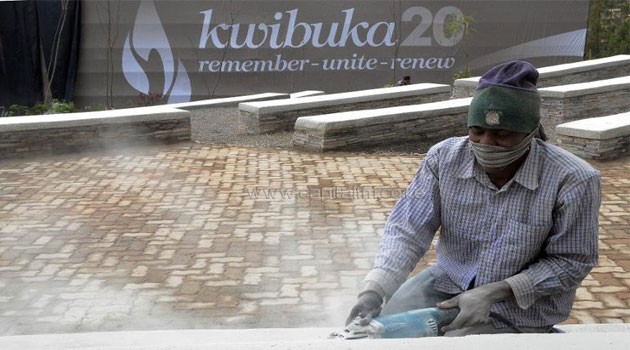Kigali, Rwanda , May 27 – Emmanuel Macron on Thursday becomes the first French president to give a speech at the Kigali Genocide Memorial, the final resting place of some 250,000 victims of the 1994 genocide in Rwanda.
Skulls, bone fragments, torn clothing and images of corpses piled up, the memorial is a confronting testimony to the horrors of Rwanda’s past.
– Inception –
Plans to set up a genocide memorial took shape in the late 1990s and in 1999, Kigali provided land in the north of the city for construction.
The process of burying the victims — often just bones or fragments — began in 2001.
The victims’ remains are laid out in three main rows, and each year more are buried as new graves are uncovered around the country.
“I don’t think anyone can really understand what happened in 1994,” says an escapee of the killings in a film opening the visit to the memorial.
The location of the memorial in Gisozi Sector used to be on the outskirts of the city and had no special or cultural significance, Honore Gatera, Director of the Kigali Genocide Museum, told AFP.
“Because of rapid development we are now almost in the centre of the city,” said Gatera.
– Names, weapons, stories –
Funded by the UK-based anti-genocide group AEGIS, the memorial documents the genocide in which some 800,000 mainly Tutsi people were beaten, hacked or shot to death in a roughly 100-day killing spree carried out by Hutu forces.
Clubs, machetes, arrows and other tools used in the massacres are on display.
The memorial contains three permanent exhibitions.
The largest of these contextualises the events leading up to the genocide, from life before colonisation to the horrors of the killings, with heart-rending accounts of survival and loss.
Another exhibition is dedicated to children, while a third called “Wasted Lives” looks at atrocities in other countries, from the Holocaust to massacres in Namibia, Armenia, Cambodia and the Balkans.
At the burial ground, The Wall of Names is dedicated to victims of the genocide.
“The work is still in progress,” said Gatera, in reference to identifying the victims buried at the site.
– Amenities –
Inaugurated in 2004 during the 10th anniversary of the killings, the facility has an education centre, a garden, library, cafe, souvenir shop and a recently constructed 1200-seat amphitheatre that hosts workshops, plays, and cultural films.
“It is a very important monument that pays tribute to the victims and is the biggest burial place in Rwanda,” said Gatera.
– Other memorials –
Five other major memorials have since been built across Rwanda.
The Kigali government has started the process to have four memorial sites listed as UNESCO World Heritage Sites.










































